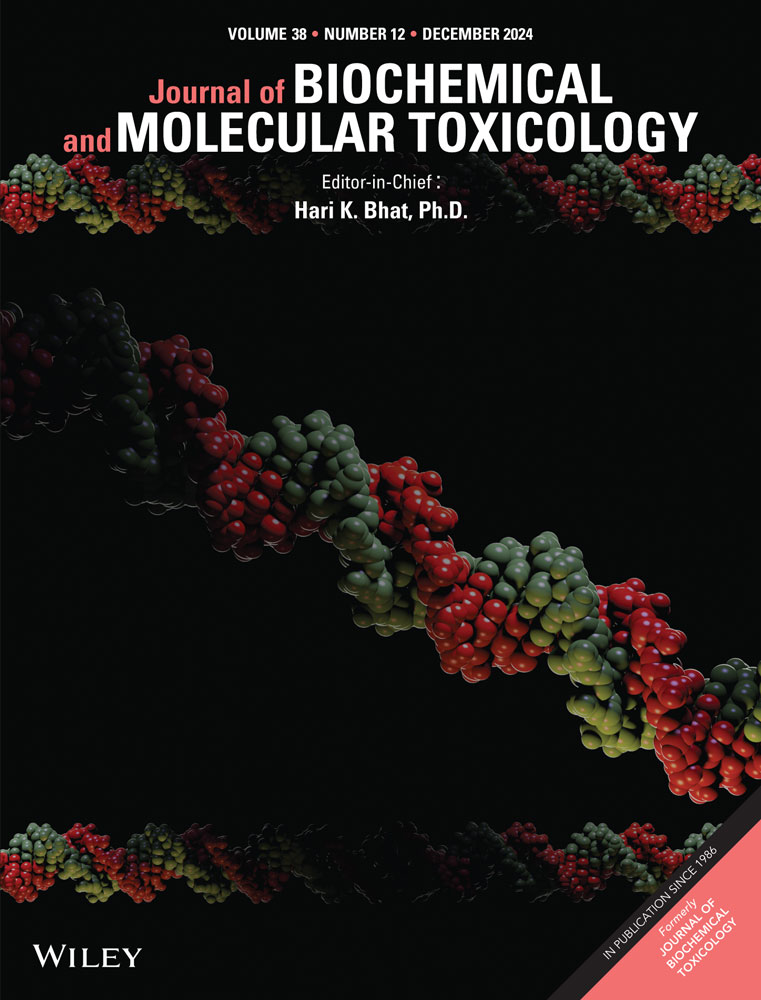Sarsasapogenin Inhibits HCT116 and Caco-2 Cell Malignancy and Tumor Growth in a Xenograft Mouse Model of Colorectal Cancer by Inactivating MAPK Signaling
Abstract
Colorectal cancer (CRC) is a prevalent malignancy globally and holds the third position in terms of cancer-related mortality in the United States. The study aimed to explore the impact of sarsasapogenin (Sar), a natural component, on CRC cell behavior and the related mechanism. Caco-2 and HCT116 cells were treated with 0–40 μM Sar or 5-fluorouracil (5-FU) to compare their cytotoxicity. Then, the optimal concentration of Sar was identified for subsequent experiments, and CRC cells in the control group were treated with dimethyl sulfoxide (DMSO). Cell counting kit-8 assays, colony-forming assays, and flow cytometry analyses were carried out to measure cell viability, proliferation, and apoptosis, respectively. Cell migration and invasion were evaluated by Transwell assays. HCT116 cells were inoculated into nude mice to induce tumorigenesis, and oral gavage of Sar was performed when tumor volume reached 50–100 mm3. Immunohistochemistry was performed to measure Ki67, E-cadherin, Vimentin, and N-cadherin expression in mouse tumor tissues. Western blot analysis was performed to assess protein levels of factors related to apoptosis, epithelial-mesenchymal transition (EMT) and mitogen-activated protein kinase (MAPK) pathway in CRC cells or mouse tumor tissues. Results showed that Sar repressed CRC cell viability in a dose-dependent manner, and the IC50 of Sar is 9.53 and 9.69 μM in HCT116 cells and Caco-2 cells. The number of CRC cell colonies was significantly decreased by Sar compared with that in DMSO group (HCT116: 52 vs. 162; Caco-2: 46 vs. 146), while cell apoptotic rate was increased by Sar (20.41% and 20.78%) compared to that in response to DMSO treatment (5.26% and 5.65%). Sar led to significant upregulation of Bax and cleaved caspase-3 protein levels while reducing Bcl-2 protein level. The number of migrated cells was reduced by Sar treatment in comparison to those in the context of DMSO treatment (HCT116: 65 vs. 223; Caco-2: 32 vs. 168). The same inhibitory impact of Sar was found on the number of invaded cells (p < 0.001). E-cadherin level was noticeably elevated while N-cadherin and vimentin levels were prominently lessened in Sar-treated CRC cells. For animal experiments, the size, growth rate, and weight of tumors were all repressed by Sar (p < 0.001). Ki67 expression was reduced and the EMT process was obstructed in mouse tumors of the Sar group (p < 0.001). Sar inhibited the activation of MAPK signaling both in CRC cells and mouse tumors (p < 0.001). In conclusion, Sar represses HCT116 and Caco-2 cell proliferation, migration, invasion, and xenograft tumor growth while promoting CRC cell apoptosis by inactivating the MAPK signaling.

 求助内容:
求助内容: 应助结果提醒方式:
应助结果提醒方式:


